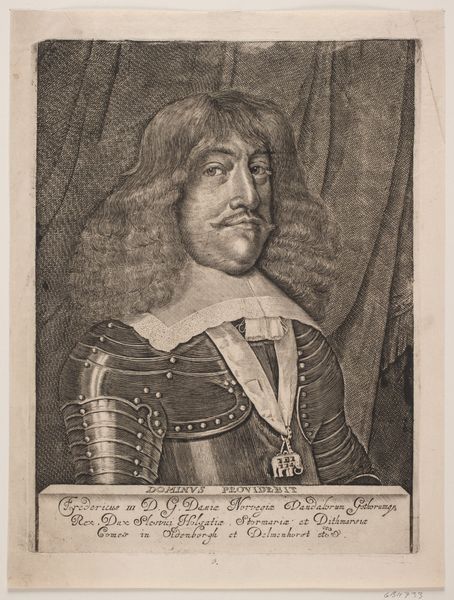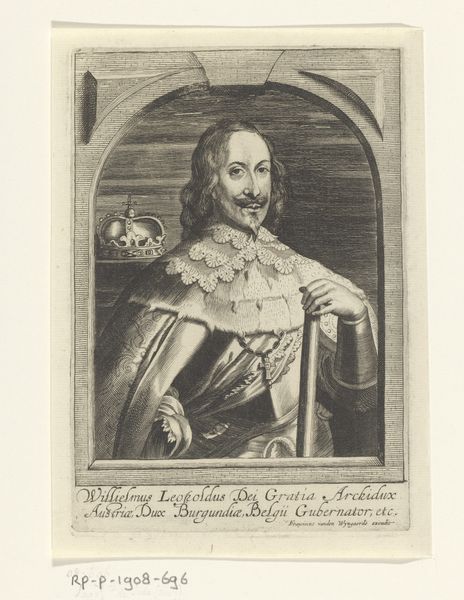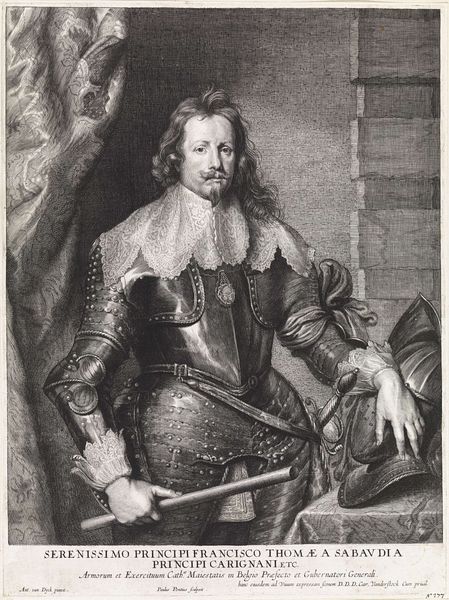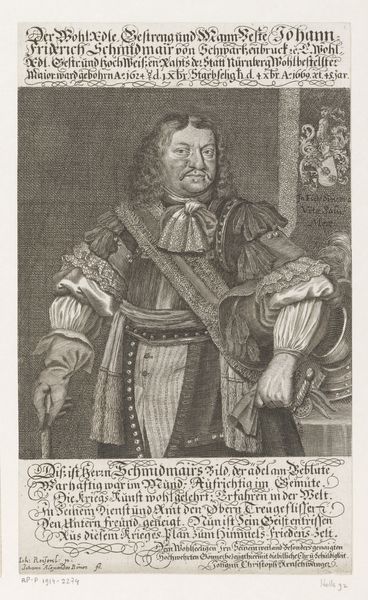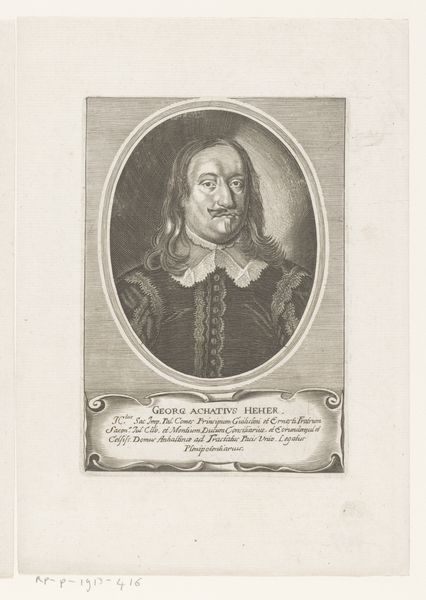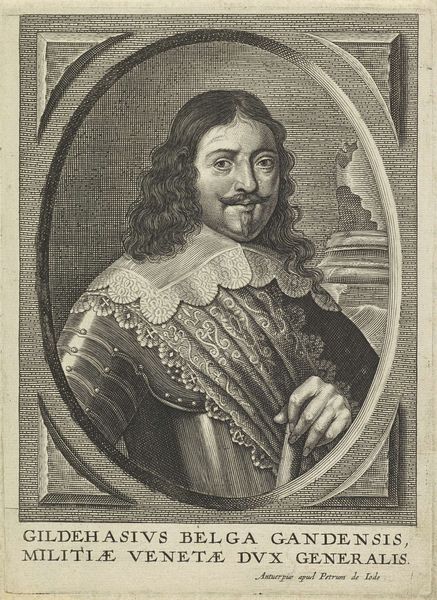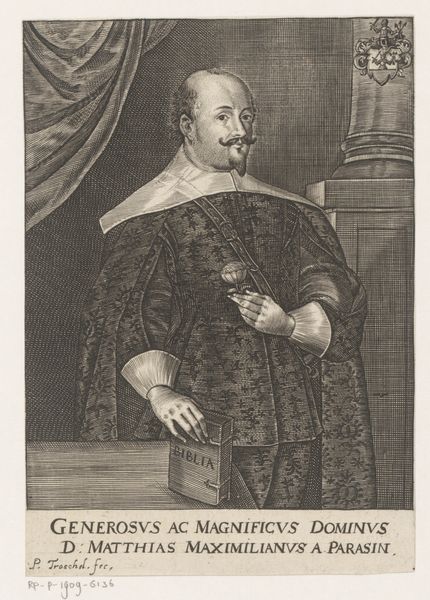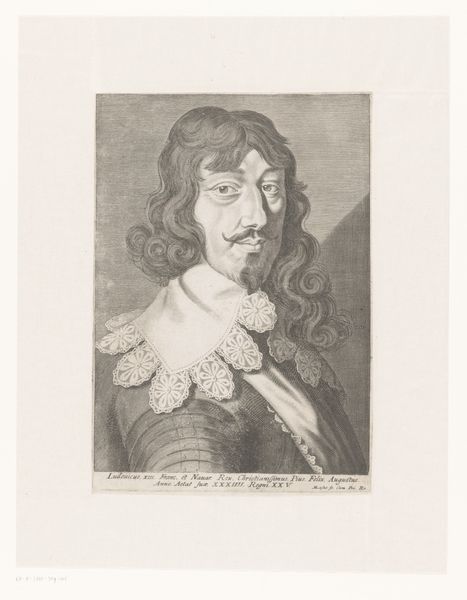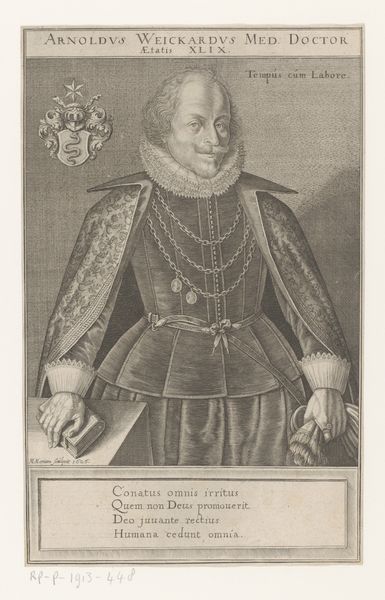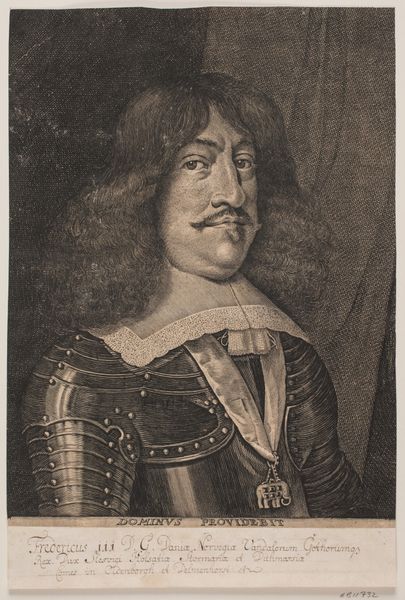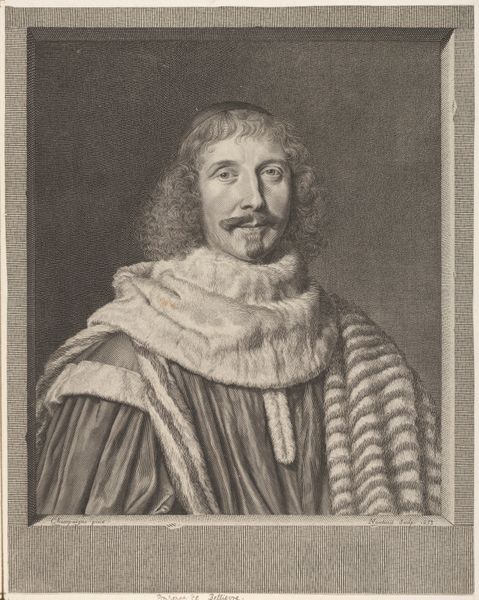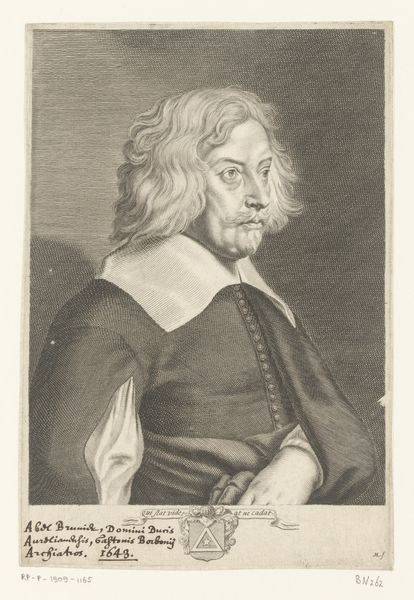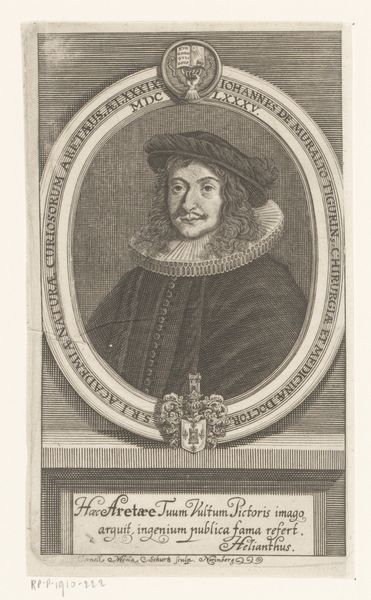
print, engraving
#
portrait
#
baroque
# print
#
old engraving style
#
engraving
Dimensions: height 178 mm, width 123 mm
Copyright: Rijks Museum: Open Domain
Curator: This portrait of Christoph Philipp Richter, made by Peter Troschel after 1637, offers us a chance to consider the material conditions that shaped its creation and reception. What strikes you most about this engraving? Editor: I am immediately drawn to the stark contrast and the incredible detail, especially given it's a print. You can see the texture of his clothing and the intricate lace of his collar so clearly. What interests me is: how did this medium impact how Richter wanted to be seen? Curator: Excellent question! We need to remember that engraving wasn't just a reproductive technology; it was a labor-intensive process. The very act of translating Richter’s image into a series of lines etched into a copper plate speaks to the value placed on permanence and dissemination. How do you think the relative accessibility of prints, compared to, say, an oil painting, affects its social function? Editor: I suppose a print allows for a wider distribution, making the portrait less about individual ownership and more about broadcasting an image. So, in that way, It seems like it functions almost as a piece of propaganda; who would consume it, and where would it hang? Curator: Exactly! Think about the burgeoning merchant class and the rise of print culture. The production of portraits like this fuelled the desire for images among individuals who were outside the traditional aristocracy, those who used these items for self-representation. And, it’s not just the dissemination, but also the skilled labor embedded in its creation—the engraver, the printer, the paper-maker, all contributing to the final product and reinforcing social stratification. It forces us to reconsider our perception of fine art in that era. What do you think is the key takeaway here? Editor: The portrait moves beyond mere representation, illustrating social relationships in production and distribution. It's a valuable reminder to always look at the labour behind a piece. Curator: I agree. Looking at the materials helps us connect to the lives and networks interwoven with the art piece’s creation.
Comments
No comments
Be the first to comment and join the conversation on the ultimate creative platform.
